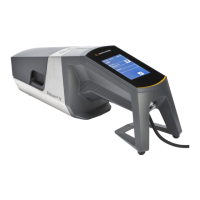
Do you have a question about the Sartorius Stedim Biotech BioSealer TC and is the answer not in the manual?
| Brand | Sartorius Stedim Biotech |
|---|---|
| Model | BioSealer TC |
| Category | Laboratory Equipment |
| Language | English |
Lists document version history and changes.
Explains warning, caution, and notice symbols for hazard communication.
Covers hand injury, hot surfaces, power disconnect, and ESD hazards.
Provides notices on device usage, environment, power, and handling rules.
States manufacturer's limitations on liability for improper use or accidents.
Lists features like sealing range, area, portability, and design.
Warns about moving parts and the importance of safety features.
Specifies industrial use only, not medical applications, and testing requirements.
Explains the sterile separation process and data logging.
Explains error messages and troubleshooting for blocked devices.
Provides guidelines and warnings for cleaning the device.
Lists agents and responsibilities for decontamination.
Illustrates correct and incorrect ways to carry the device.
Lists all items included in the BioSealer TC package.
Identifies main device components via a diagram and table.
Guides on connecting power and turning on the device.
Explains initial login, supervisor access, and user authentication.
Details periodic maintenance alerts and service needs.
Describes the process of initializing device axes after startup or tubing change.
Guides on correctly inserting tubing and closing the device cover.
Details starting the compression phase and verifying tubing.
Explains how to clamp tubing on both sides of the sealer.
Covers the heating and cooling phases of the sealing process.
Shows information logged after a successful sealing.
Describes how to remove the sealed tubing once the process is complete.
Guides on visually checking seal quality using a template.
Details when and how to remove clamps after sealing.
Explains that only one interface (touch or web) can be active at a time.
Introduces the touch screen as a primary control method.
Shows the menu tree for the Supervisor user group.
Details various functions accessible via the touchscreen menus.
Explains common and menu-specific symbols used on the touchscreen.
Describes buttons, spin boxes, text boxes, and input windows.
Explains how to log in, log out, and automatic logout.
Guides on adjusting the device's date and time settings.
Explains how to change the device's display language.
Details how to select the correct tubing type and size for sealing.
Explains how to reset network settings to factory defaults.
Covers adding, managing, and deleting users and their permissions.
Explains how log data is stored on the SD card and directory structure.
Lists device status details like IP address, serial number, and wear.
Guides on finding the IP address and accessing the device via browser.
Outlines the main menu items available in the web interface.
Describes buttons, spin boxes, and text boxes in the browser interface.
Shows the layout and components of the web browser interface.
Covers device settings like tubing, language, and network via the web interface.
Explains user login and logout procedures within the web interface.
Details managing users, passwords, and auto-login via the browser.
Explains how to download device state, logs, and sync date/time.
Describes how to download log files (raw, pdf, html, csv) via the browser.
Explains synchronizing device time with the host computer.
Describes the process of initializing the device's axes.
Refers to the sealing process and how to initiate a run.
Explains device behavior and actions during power interruptions.
Guides on performing temperature validation using a separate tool.
Explains how to access the service position for cleaning or removing tubing.
Details the content of the seal log table, including date, time, user, etc.
Describes the seal log screen for GMP/FDA environments and its display conditions.
Compares user groups, their controls, and interface support.
Explains when and how to safely switch off the device.
Warns about foreign objects and their impact on device mechanics.
Discusses issues arising from using the wrong tubing and consequences.
Lists potential causes for the device not recognizing the SD card.
Outlines methods for resetting lost passwords for users.
Provides instructions for manually opening the device cover if it fails to auto-open.
Lists common error messages and their potential causes and solutions.
Explains warning messages, their causes, and recommended actions.
Discusses hazardous materials and operator responsibility for decontamination.
Outlines steps before disassembly and warnings about sharp parts.
Covers proper disposal methods and battery disposal.
Lists technical details like voltage, current, operating temp, and mass.
Details input voltage, frequency, current, and power cord requirements.
Provides physical dimensions of the BioSealer TC with diagrams.
Lists copyright notices and registered trademarks of relevant companies.
Provides contact information for technical support.